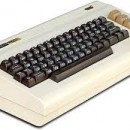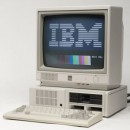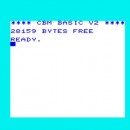SIX BITS 1983)
I wrote the augmentative communication computer program SIX BITS for a man with normal intelligence and quadraplegia that affected his speech, making it impossible for others to understand him. He used the program for years; earlier he had a Morse-code based device for which parts could no longer be obtained. Staff at his facility trained him to use the program. The VIC would remain on all day.
Read MoreClark in Three Parts (1991)
In 1991, in the pages of the Stone Mountain Computer Users Group newsletterm I told the story of my work with a physically disabled man I called Clark.
Read MoreUsing a Discrimination Task to Teach Scanning to Severely Physically Impaired Non-Vocal Children (1984)
“All a Board” is an augmentative communication computer program which was designed by the author to allow individuals with very severe physical handicaps to communicate their wants and needs to others, using a single switch. It serves the same purpose as any communication board, but requires much less physical ability.
Read MoreReview of EZ-SCAN (1993)
EZ-SCAN is a memory-resident software program for MS-DOS computers. It enables an individual to access all keyboard functions via a single switch attached to a joystick port. Selections are made by multiple switch entry.
Read MoreThe Use of Microcomputers as Augmentative Communication Devices (1984)
For persons with severe motor impairments which limit their ability to move as well as to speak, computers are of importance as communication aids. However, computer-based communication devices have heretofore been expensive and often crude. The proliferation of reliable, low-cost personal computers has solved the hardware problem, but communication ware is frequently inadequate or inefficient.
Read MoreAugmentative Communication Systems: Suggestions for Improvement of Selection Strategies (1984)
Many persons with a wide variety of disabilities are unable to speak. Those with good physical mobility can learn to effectively use American Sign Language, pencil-and-paper, battery-operated electric typewriters or memowriters, or other communication aids or systems (Silverman, 1980). However, the severely physically involved, non-vocal person— for instance, children with cerebral palsy, stroke victims, and those with degenerative neurological or muscular diseases such as Amyotropic Lateral Sclerosis or Muscular Sclerosis, may lack the voluntary control to use even a lap board with words or symbols drawn on it.
Read More


